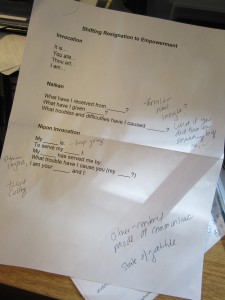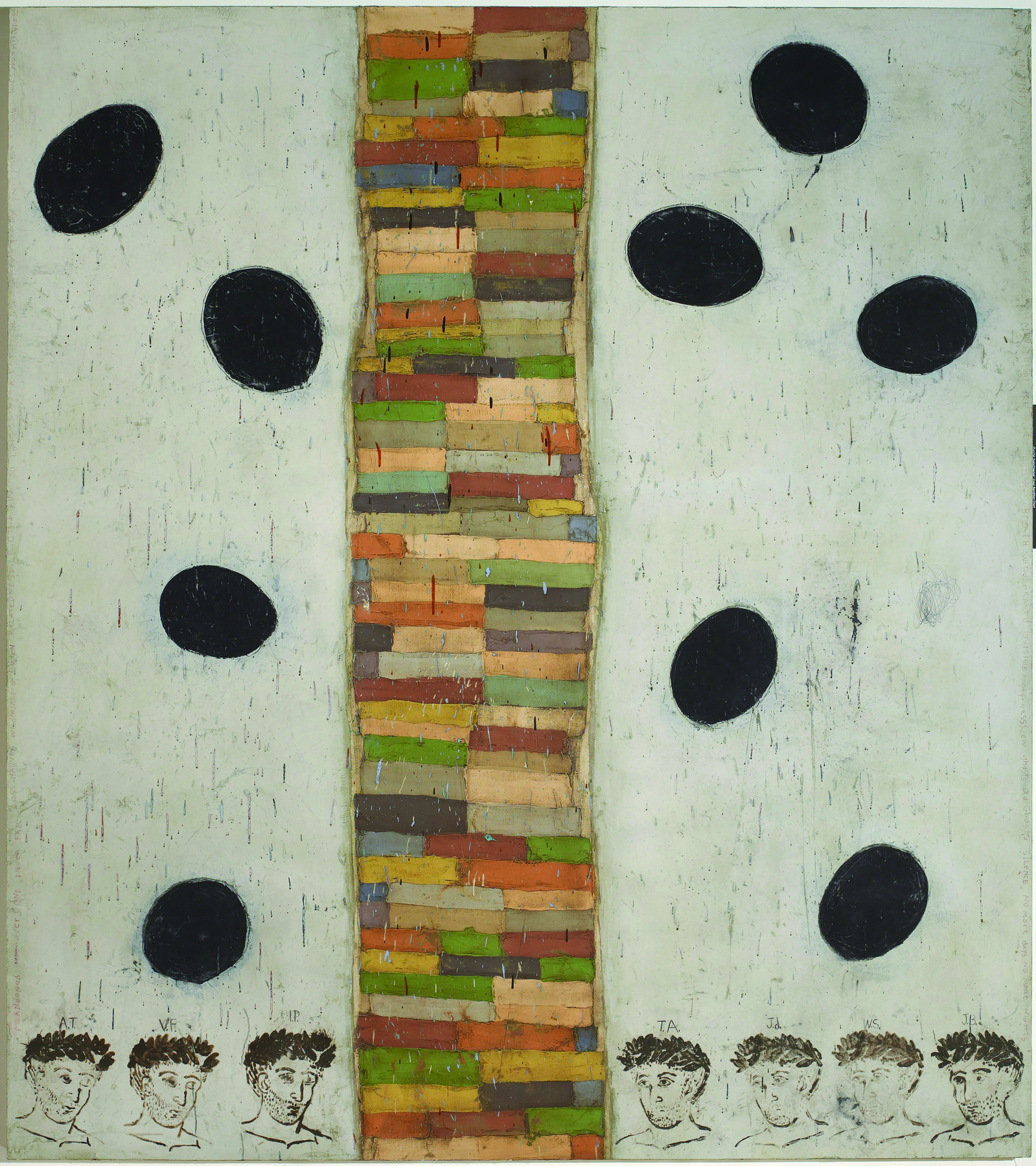 Rebecca Stockley and Matt Smith led one of the most engaging workshops I attended at the Applied Improvisation Conference. I never totally connected the title “Shifting Resignation to Empowerment Workshop” to the activity until I slept on it for a few days and then was treated to a little “neuron connecting” via Viv McWaters.
Rebecca Stockley and Matt Smith led one of the most engaging workshops I attended at the Applied Improvisation Conference. I never totally connected the title “Shifting Resignation to Empowerment Workshop” to the activity until I slept on it for a few days and then was treated to a little “neuron connecting” via Viv McWaters.
Viv blogged about the learning intersection between improvisation and facilitation. This probably was the door that allowed my thinking to go a bit further than a fascination with an applied improv method. In “Facilitation Tips for Improvisers” Viv gently reminds both sets of practitioners how much they know, add and, perhaps, don’t know about the other’s practice. I love how she teased out the mutual learning that is possible at the intersection of these practices and for me, thinking about how and where to use an improv exercise or method needs that practice-boundary-crossing.
Then, after I drafted the first part of this post, Viv posted about the exercise. That made this blog post easier. Thanks, Viv.
Bacl to Rebecca and Matt. They shared three improv exercises to help shift thinking, to get out of that “stuck” spot. To see possibility.
They started with “Invocation,” part of a more complex style of long form theatre improvisation known as “Harold!” (I’ll let you read about that yourself!) After a little searching, it seems that the Invocation is often uses as an opening for longer form improv. But we were interested in the application of this form in business or organizational life. Here is how Viv summarized it (Viv, I hope it is ok I’m borrowing so boldly!)
Here’s how it works. You start with an inanimate object. Anything really – a hat, a salt shaker, a cup,a book…
There’s four rounds. In groups of say four people, you can throw comments in at each round. It’s okay to talk over each other, to jump in. The idea is to keep the comments coming. There’s no need to incorporate other people’s ideas, although that might happen. Anyone can move on to the next round whenever they choose. Once one person moves on, everyone else moves on too. Whether they’re ready or not.
Basically you invoke the object as follows:
It is…
You are…
Thou art…
I am…
You can discover things about yourself through objects. You can also do an invocation on fear, age, stress or something else you are wrestling with.
We then moved on to Naikan, which comes from a Japanese reflective process. The form is:
What have I received from ______ (name the person, thing, group)?
What have I given _____?
What troubles and difficulties have I caused ____?
Clearly my upbringing in a guilt centric religion caused me to first experience this as GUILT GUILT GUILT! But I do appreciate it can, in its deeper form, be really useful. I would not use it in a meeting. No way. No where!
But then they gave us a mashup between the Invocation and Naikan, the Nipon Invocation and this one was more accessible to me and thus I can see using it. In fact it is already slipping into a few designs. Here is how Viv described it:
And for people completely out of touch with their calling, here’s another one that Rebecca and Matt mashed up. It too is powerful. In fact, I think I like it even more. Rebecca and Matt demonstrated this as a pair. I think it could also be done in small groups, or individually. It’s a way of using improvisation to go deep with people – or with yourself.
Let’s say the subject is ‘talent’, and I’m using this on myself. Here’s the script for the Nipon Invocation:
My (talent) is…
To serve my (talent) I…
My (talent) has served me by…
The trouble I have caused my (talent) is…
Viv, I am your (talent) and I…
Viv is experienced with improv, so I think she “saw” the application before I did. I had to experience the form, then muddle on it.
Matt and Rebecca role modeled this form so brilliantly, I was a bit awed and intimidated by the high performance standards — both are seasoned improv actors. But they assured us that “real people” do this to great results.
While I still don’t quite see the traction for these methods in shifting from resignation to empowerment, I REALLY do see their application in unpeeling something to get at it from different perspectives. As I said, I plan to use this.
I love the APPLIED part of this whole improv thing! (Next step, take another improv workshop here in Seattle. Soon!)
 Have you been intrigued by my AIN12 posts? Here are some more goodies via Viv McWaters – Applied Improvisation Network 2012 World Conference (with images, tweets) · vivmcwaters · Storify. Look at all the little gems, or perhaps more aptly, facets that the tweets expose. I think you had to be there for the gems. I think my favorites are:
Have you been intrigued by my AIN12 posts? Here are some more goodies via Viv McWaters – Applied Improvisation Network 2012 World Conference (with images, tweets) · vivmcwaters · Storify. Look at all the little gems, or perhaps more aptly, facets that the tweets expose. I think you had to be there for the gems. I think my favorites are:





